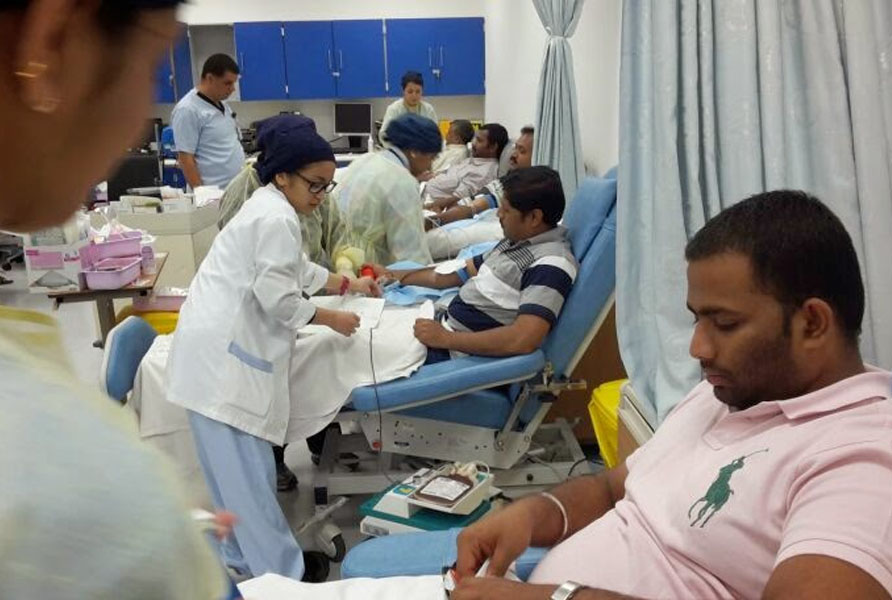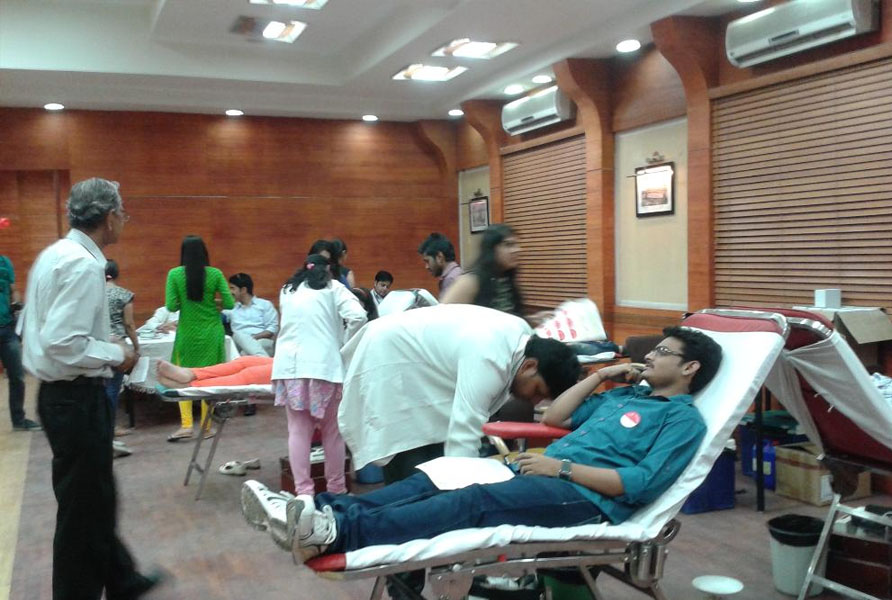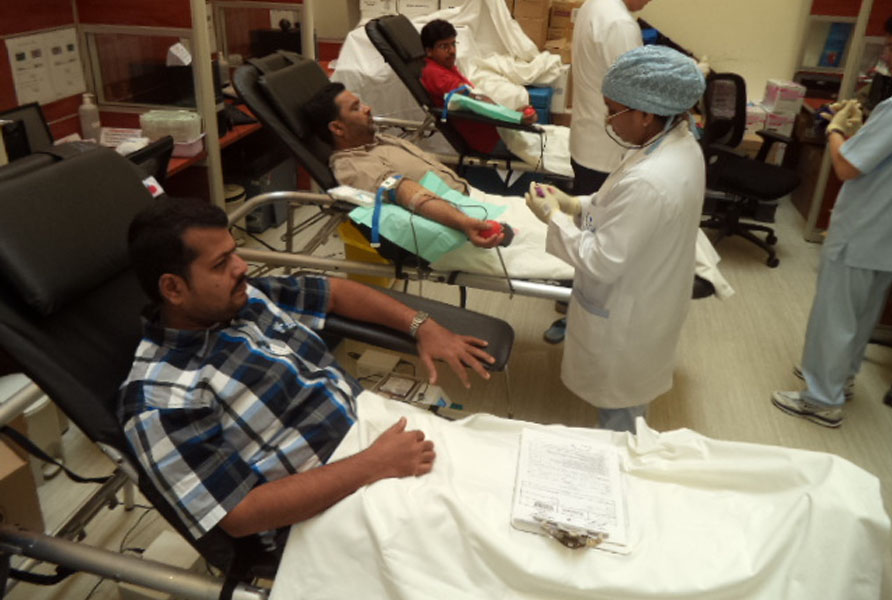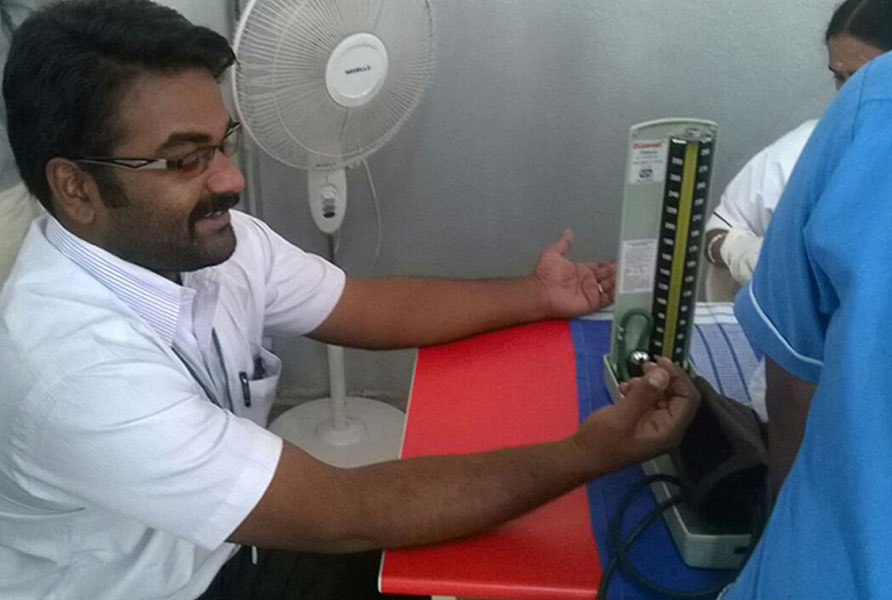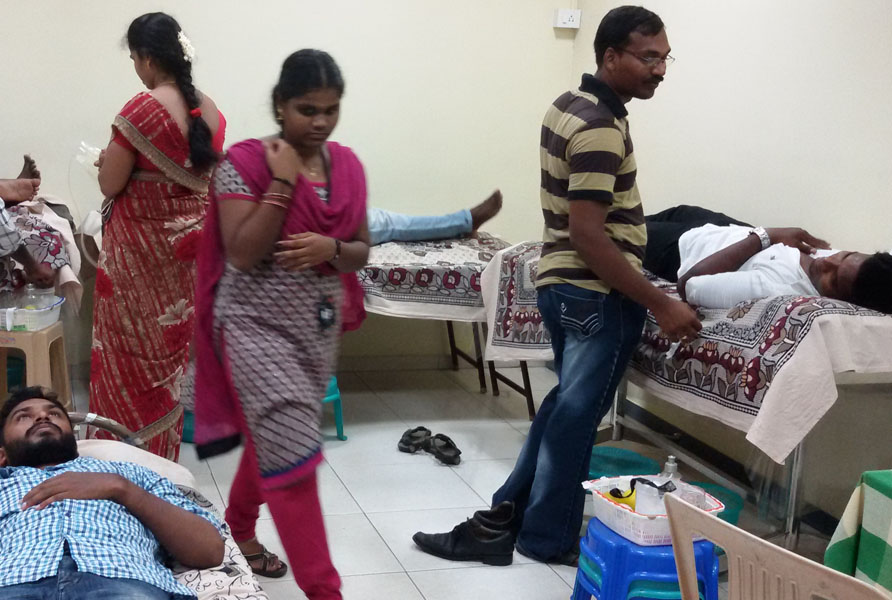Blood Donation
Blood cannot be manufactured in factories; it can only come from generous donors.
According to WHO data, India faces a shortage of 3 million blood units. This shortage can easily be eliminated if only an additional 2% of India's youth donates blood. To make this possible, Sun Global Trust acts as a channel connecting voluntary blood donors with those who need blood. It is a youth-run organization and provides free help and specially works to target the poor and the needy.
Since its inception, the organization has grown a lot in terms of working for this cause. Sun Global Trust has developed a 360 degree solution to the problem of blood shortage. We innovate camps by making them theme-based, using social media and by dis-incentivizing donation, making it voluntary
| Blood is collected in plastic bags which contain a fluid which prevents blood from getting coagulated. Blood banks usually draw 450ml of blood when the blood donation is in the blood bank and 350ml when the blood donation is in a blood donation camp (outside the hospital). This blood, along with the anti coagulant present in the bottle or bag, is known as one unit of blood.VT |
| For all practical and routine purposes, it is ideal and preferable to transfuse to the patient the same group of blood which he belongs to. It is only under very dire emergencies that the blood banks take O group as universal donor and AB groups as universal recipient. Also, under no circumstances O group can get any other blood except O. Similarly A group patient cannot be given B group blood and vice versa. |
|
The following symptoms may occur after only a few ‘ml’ of blood have been given: Patient complains of shivering, restlessness, nausea and vomiting. There is precardial and lumbar pain. Cold, clammy skin with cyanosis. Pulse rate increases, respiratory rate increases. Temperature increases to 38 to 40 deg C. [101 to 105 F]. Blood pressure falls and patient passes into a state of shock. Haemoglobinaemia, haemoglobinurea (urine turns red); oliguria (urine becomes scanty or the urinary output is reduced) and anuria (total output of urine becomes 200 ml. a day) Jaundice appears after a few hours and in some cases anuria persists and uremia develops. This may lead to death. |

